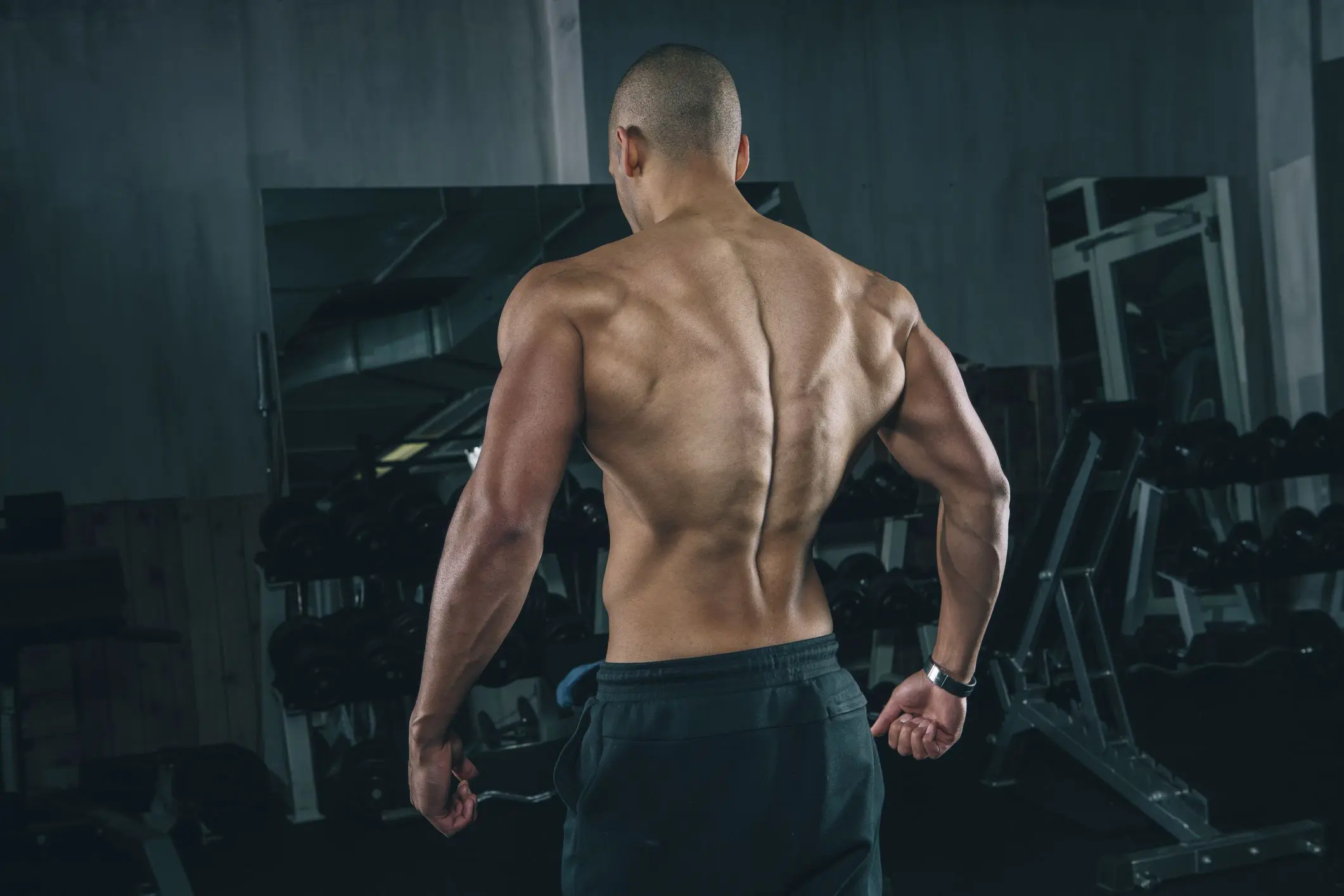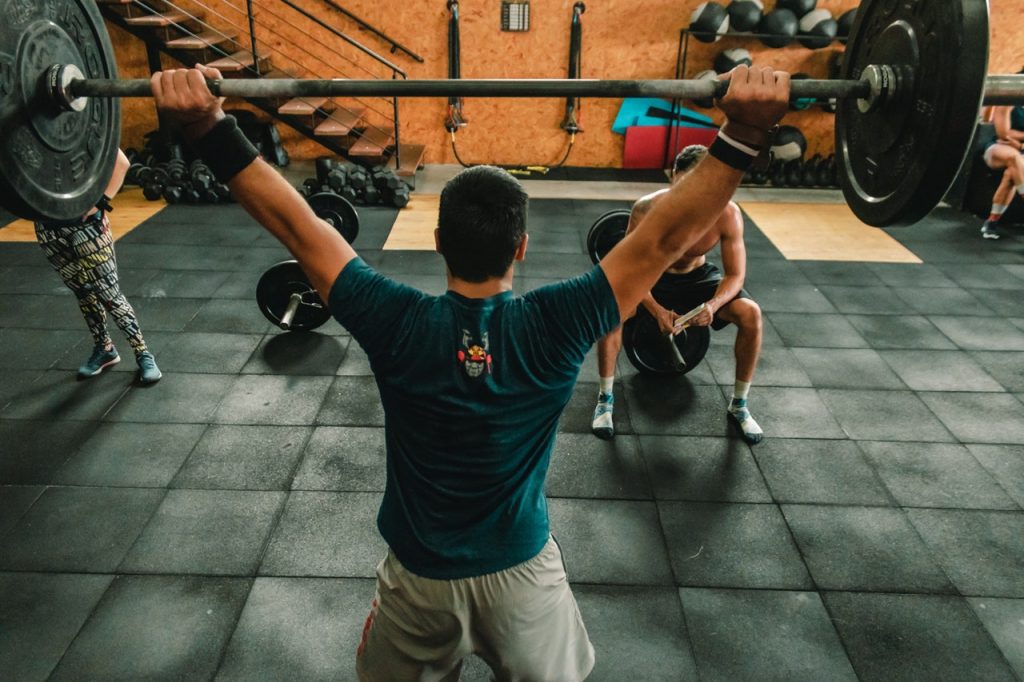
The best online fitness resource you'll ever need. We filter out the BS to ensure you meet your health and fitness goals!

The best online fitness resource you'll ever need. We filter out the BS to ensure you meet your health and fitness goals!

The erector spinae (spinal erectors) are a group of muscles, tendons and ligaments that make up a crucial component of your posterior chain. They run the length of your spine, either side of the main vertebrae, from the sacral region of your hips all the way up to the base of your skull, via your lumbar and thoracic spine (lower and middle back, respectively.)
Essentially, they run from your top to your tail, all the way up your spinal column.
Your erector spinae have a couple of different functions.
Firstly, they work as a set of antagonists and have a core stabilising purpose. The resistance they give helps to control the action of bending forward from the waist and hips. Alongside your transverse abdominus and internal obliques, among other muscles, they keep your torso upright and stable. Basically, every time you manage to stand upright with your torso simply turning to jelly, they are at work. This is vital in enabling you to move smoothly, under control, without simply flopping forwards at all times.
Secondly, they provide active motion when bringing your body back to upright from a bent over position. Every time you sit up straight, stand up, or straighten your back, your spinal erectors are working as prime movers to get you there. They do so in conjunction with the other main muscle groups of your posterior chain- your hamstrings and glutes, amongst others.
You should now be starting to see why it’s so important to keep your spinal erectors in good condition.
Back ache is a chronic condition that is becoming increasingly common as we live ever more sedentary lives. A major part of the problem is the atrophy of muscles through inaction as we age. A major muscle group involved here is the erector spinae.
If you suffer from back ache at all, there’s a strong chance that your spinal erectors are weak and often overburdened. If you don’t want to suffer with an aching back or any undue muscle strains, especially later in life, then it’s important to stay on top of your erector spinae health and strength- starting immediately!
In addition, the erector spinae are important for fitness enthusiasts of any stripe. A strong, agile upper back is impossible with weak spinal erectors. They keep your torso erect and stable, allow it to twist and flex safely and with ease, and are a major load bearing muscle group in most forms of upper body resistance.

If you’re into heavy lifting, or any sport that involves any kind of torso power, you will need to keep them strong. Swimmers, rock climbers, tennis players, power lifters… the list goes on. Every movement you make will suffer for not having strong spinal erectors.
If you’re into bodybuilding or if you compete in any kind of physique contests, you will need to keep your spinal erectors on point, too. Firstly, an aesthetically pleasing upper back generally requires well defined, sculpted erector spinae. Secondly, every other aspect of your back’s musculature relies on them. It would be hard to build wide, deep lats or chiselled rhomboids without having a decent base strength along your spine upon which to work.
There are several main components to bear in mind when training your spinal erectors, all based on one or more of their key uses:
You will need exercises that emphasise all of these points. Train each under control, on a regular basis, and your spinal erectors should reap the rewards. You will be safer for training them, your back will ache less (if at all!) and every major compound movement that relies on them being strong and supportive (think deadlifts and squats, alongside upper body movements like the overhead and bench presses) will improve.
For the sake of training your spinal erectors, every major lift will improve. In fact, your body’s overall power output will improve, as you find yourself able to keep your torso solid and generate and manipulate extra strength through your whole back.
This being said, let’s take a look at five of the best exercises you can perform on a regular basis in order to achieve strong, healthy and stable spinal erectors.
The following exercises represent a full array of erector spinae uses. From flexion to stability, doing all five will cover every base.
This is an entry level exercise and is one of the most basic spinal erector exercises going. It’s also one of the best exercises you can do for spinal erector health.
You can perform aeroplanes with either just your bodyweight, or with a couple of light dumbbells or ankle and wrist weights. Do these anywhere for a quick and easy erector spinae workout, or put them at the end of your session on a back or deadlift day.
To perform aeroplanes:
This is a step up from the aeroplane. Back extensions are great bodyweight exercises that pretty much every serious deadlifter swears by. They works flexion through your spinal erectors whilst working your entire posterior chain through a full range of motion under a very light load.
To perform back extensions:
Rack pulls are one of the best exercises going for full upper body power, grip strength and back and posterior chain development. They put a great deal of load throughout your full torso and uses the spinal erectors for one of their main functions: straightening the body.
You will want to train rack pulls heavy, with a barbell and, if possible, full squat rack or good quality blocks. Add rack pulls in at the beginning of a back/posterior chain workout in place of deadlifts and treat it as the main movement of the day.
Either go for low reps (anything from 1-6) or higher reps (up to 12 or so.) Either way, you will want to aim for at least bodyweight on the bar.
To perform a rack pull:
This is another powerhouse accessory movement to the deadlift and will work your body in much the same way as a rack pull. However, rather than using a rack to pull on a stationary bar, you will keep hold of the bar throughout the full set.
The Romanian deadlift is obviously a variation on the conventional deadlift. However, it’s less taxing and better suits higher rep ranges. Use it as an accessory to deadlifts, or program it in place of your regular deadlift on higher rep days.
The Romanian deadlift begins at the hip, at lockout. From here, you lower it to just below knee level, arrest the decline, and then lift it up again.
To perform Romanian deadlifts:
This is not strictly speaking an erector spinae exercise. It’s a variation on the farmer’s carry designed to work the trunk and obliques. However, it’s a great stabilising exercise for the entire torso and will be very beneficial to your spinal erectors.
To perform a suitcase carry:
Spinal erectors can be sorely overlooked, especially by those only seeking to build the t-shirt muscles (chest, arms, and shoulders) or by athletes who rarely train on the gym floor.
However, as we have seen, keeping them strong and supple can bring you great benefits both in terms of athletic performance and health.
Improving the health of your spinal erectors will enable you to move your body more ably, and to perform much more efficiently under load. Any movement that involves a squatting or pulling motion will be directly improved, whilst any other movement that requires power and manipulation through your back (which is basically every movement) will be better and more safely performed for having a stronger set of spinal erectors.
Focus on them, include the above exercises in your life, and you can expect to have a strong, functional and pain-free back well into your golden years.